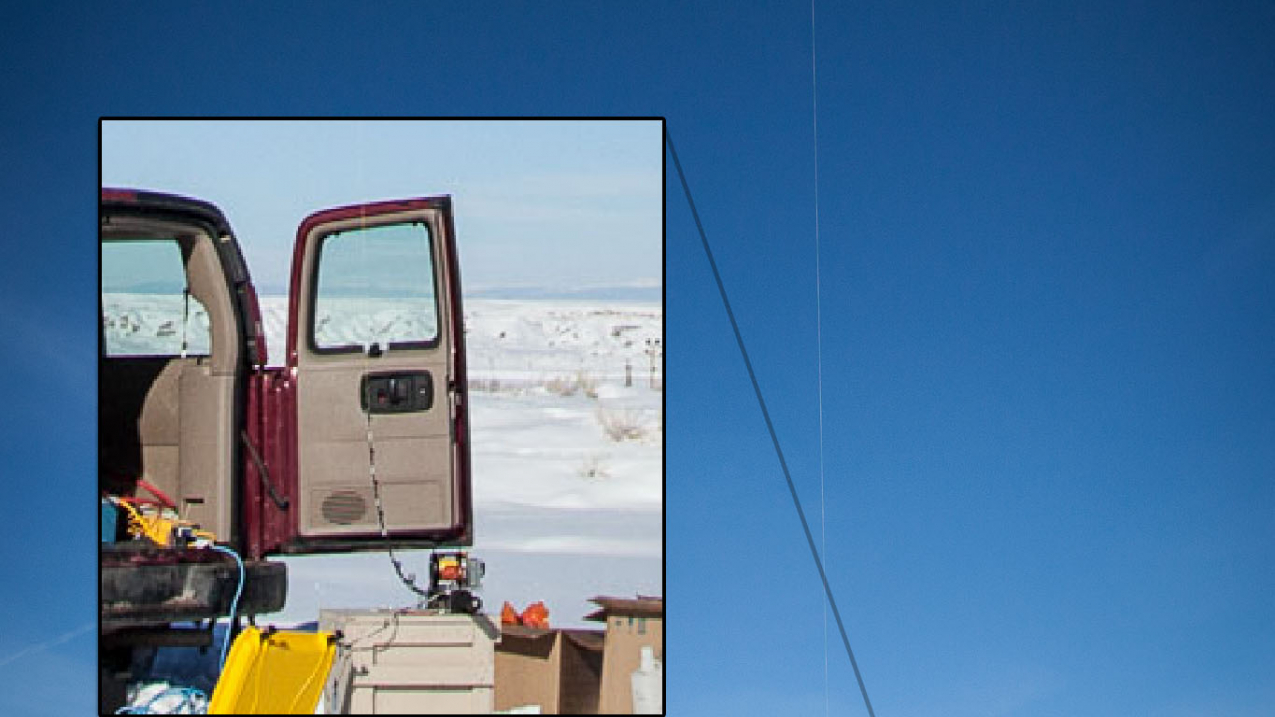
A creative and effective approach to data collection: NOAA scientists used an instrumented weather balloon tethered to a motorized fishing rod to study the rate of ozone formation in Utah’s remote Uinta Basin in 2013. (Image credit: NOAA)
A deep sea fishing rod is probably not the first tool that comes to mind when thinking about how to study air pollution in a remote inland desert, but it’s the heart of a new NOAA system that has given scientists a minute-by-minute look at how quickly the sun can convert oil and gas facility emissions ground-level ozone harmful to human health.
Dubbed the “tethersonde,” the sampling system mates a deep sea fishing rod to a standard weather balloon carrying an ozone-measuring instrument and radio transmitter. Driven by an electric motor and controlled by custom software, the rig allows researchers to raise and lower the balloon to specific altitudes at precise rates.
Read more about this research and the impacts of ozone pollution to human health.

